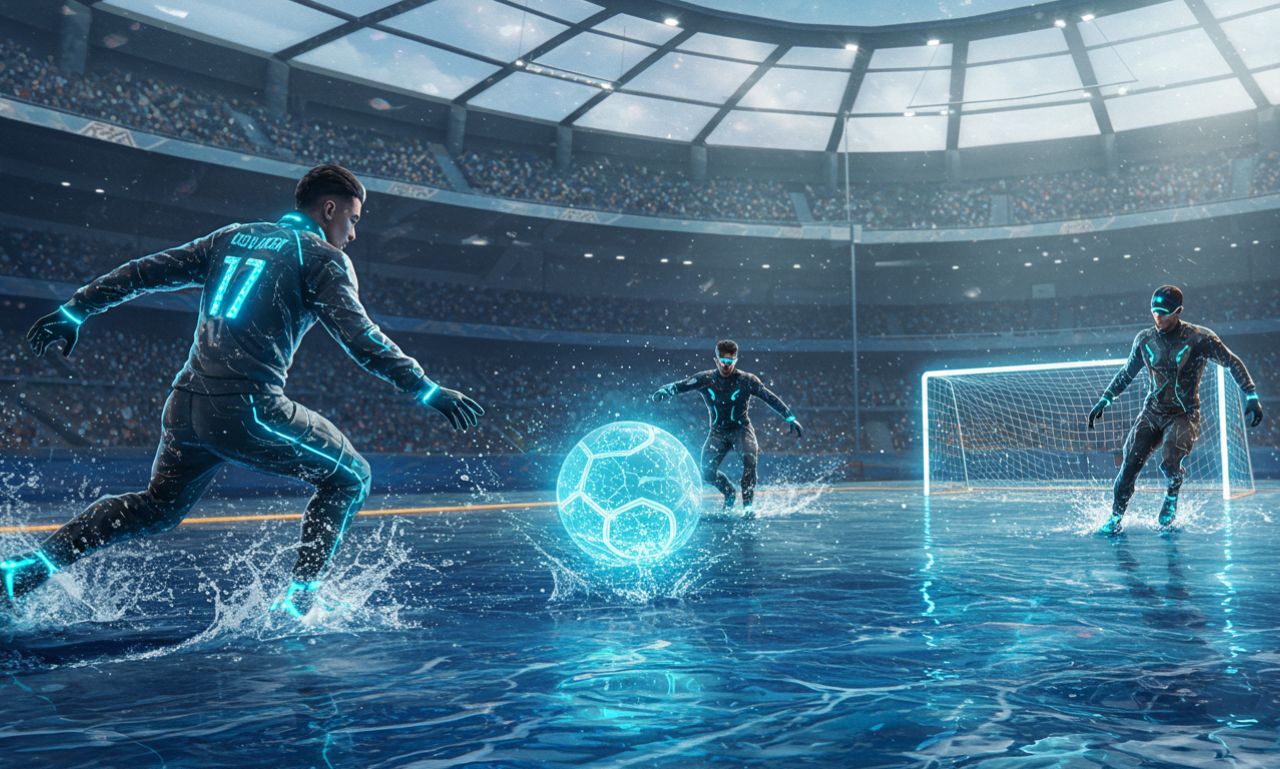Liquid soccer is redefining the way we think about football by emphasizing constant movement, creative tactics, and adaptive playstyles. Unlike traditional formats that have more rigid structures, liquid soccer thrives on fluidity—both in player positioning and in the rules that govern the match. This fresh take on the sport has been gaining popularity worldwide, particularly in 2025, as both amateur players and professional teams look for more dynamic, engaging formats.
What Is Liquid Soccer?
Liquid soccer is a variation of football designed to maximize action and minimize downtime. It draws from the principles of small-sided games, futsal, and street football but adds unique elements:
-
Continuous Play: Minimal stoppages, even after goals or fouls.
-
Flexible Positions: Players are not locked into fixed roles, encouraging versatility.
-
Dynamic Substitutions: Players can swap in and out on the fly.
-
Adaptive Rules: Game parameters can change based on match conditions, promoting strategic adjustments.
This results in an intense, skill-based competition that challenges both physical endurance and tactical thinking.
Origins of Liquid Soccer
The concept emerged in urban football communities where space was limited and matches had to be quick yet exciting. Over time, coaches and players began experimenting with fluid rules to keep engagement high. By 2023, leagues dedicated to liquid soccer began forming in Europe and South America, and in 2025, global tournaments are starting to appear.
How Liquid Soccer Differs from Traditional Football
-
Field Size: Often played on smaller pitches, increasing player involvement.
-
Game Length: Matches are shorter—typically 20 to 30 minutes per half—but more intense.
-
No Set Formations: Teams can switch tactics instantly without official pauses.
-
Interactive Boundaries: In some versions, walls or rebound zones keep the ball in play.
This format not only speeds up the game but also encourages creative problem-solving.
Rules and Gameplay of Liquid Soccer
While rules can vary slightly by league, the core principles include:
-
Kick-ins instead of throw-ins to keep play fluid.
-
Unlimited substitutions without stopping the game.
-
Rolling restarts after goals to avoid delays.
-
Fewer set pieces and reduced stoppage time.
The emphasis is always on maintaining momentum and encouraging risk-taking.
Skills That Shine in Liquid Soccer
Because of its fast pace, liquid soccer rewards:
-
Close Ball Control: The ability to maneuver in tight spaces.
-
Quick Decision-Making: Reading the game and adapting instantly.
-
Endurance and Agility: Short bursts of energy sustained throughout the match.
-
Versatility: Comfort in both defensive and attacking roles.
Tactical Approaches in Liquid Soccer
Teams often adopt flexible strategies such as:
-
Fluid Triangles: Constantly shifting passing triangles to open space.
-
Press-and-Switch: Aggressive pressing followed by quick formation changes.
-
Total Rotation: Every player experiences different positions during a match.
These tactics keep opponents guessing and exploit the constantly moving nature of the game.
Benefits of Liquid Soccer
-
Higher Engagement: More touches per player mean everyone is involved.
-
Skill Development: Sharpens technical ability faster than slower formats.
-
Fitness Boost: Intense play improves cardiovascular endurance.
-
Entertainment Value: Faster pace makes it more exciting for spectators.
Liquid Soccer and Youth Development
Many academies are adopting liquid soccer to train young players. The format encourages:
-
Creativity and improvisation.
-
Faster decision-making under pressure.
-
Comfort with multiple positions.
Coaches note that players trained in liquidsoccer adapt more easily to various football systems.
Global Popularity in 2025
In 2025, liquidsoccer leagues are popping up in:
-
Europe: Spain, the UK, and the Netherlands have thriving semi-pro circuits.
-
South America: Brazil and Argentina are integrating it into street football culture.
-
Asia: Japan and South Korea are developing e-sports versions alongside physical leagues.
Its accessibility and simplicity are fueling rapid adoption worldwide.
Liquid Soccer and Technology
Technology is enhancing the experience with:
-
Wearable Trackers: Monitoring player movement and performance in real time.
-
Smart Balls: Capturing data on speed, spin, and accuracy.
-
Live Streaming Platforms: Broadcasting matches for global audiences.
Some leagues even use AI refereeing to keep games fair and fast-paced.
LiquidSoccer in the E-Sports Space
The digital version of Liquidsoccer is becoming a hit among esports players. Gamified adaptations allow:
-
Online leagues with realistic physics engines.
-
Crossplay between console and PC.
-
Integration with fantasy sports platforms.
This crossover between physical and digital formats broadens its appeal.
Challenges Facing LiquidSoccer
Despite its rapid growth, liquid soccer faces:
-
Standardization Issues: Different leagues have varying rules.
-
Recognition: Not yet fully accepted by traditional football bodies.
-
Infrastructure Needs: Smaller pitches and special surfaces can be costly.
However, the excitement it generates continues to drive expansion.
Future of LiquidSoccer
Experts predict:
-
Expansion into mainstream sports channels.
-
Hybrid tournaments combining traditional and liquid soccer formats.
-
Youth leagues feeding into professional liquid soccer clubs.
If trends continue, it may soon rival futsal and five-a-side in popularity.
Conclusion
Liquid soccer is not just a new way to play—it’s a reimagining of football itself. Its speed, creativity, and adaptability make it both a thrilling sport to watch and a powerful training tool for players at all levels. As 2025 progresses, a liquid blend of athleticism, skill, and strategic depth positions it as a potential global phenomenon.
Whether you’re a player looking for a challenge, a coach seeking better training methods, or a fan craving more action, soccer offers a fresh, exciting alternative to the traditional game.

